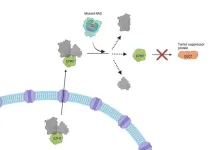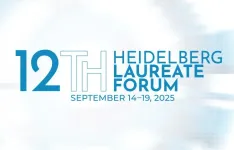(Press-News.org) Research Highlights:
A version of the Multi-Ethnic Study of Atherosclerosis (MESA) heart disease risk score that did not include race predicted heart disease risk just as well as the original version that includes race.
The original MESA risk score, developed in 2015[1], combines traditional risk factors, sex and race with a coronary artery calcium score.
The MESA formula without race may be used for people who identify with more than one racial or ethnic group or those who prefer not to disclose their race or ethnicity.
Note: The study featured in this news release is a research abstract. Abstracts presented at the American Heart Association’s scientific meetings are not peer-reviewed, and the findings are considered preliminary until published as full manuscripts in a peer-reviewed scientific journal
Embargoed until 4 a.m. CT/5 a.m. ET, Monday, Nov. 11, 2024
CHICAGO, Nov. 11, 2024 — A version of the MESA heart disease risk score that did not include race predicted heart disease risk just as well as the version that includes race, according to a preliminary study presented today at the American Heart Association’s Scientific Sessions 2024. The meeting, Nov. 16-18, 2024, in Chicago, is a premier global exchange of the latest scientific advancements, research and evidence-based clinical practice updates in cardiovascular science.
“Our work is part of a growing effort to assess the implications of including race and ethnicity in clinical risk prediction models,” said lead investigator Quinn White, B.A., a doctoral student at the University of Washington, Seattle. “This change broadens the potential use of the score, since it can now be calculated for those who do not fit into one of the racial or ethnic groups of the original score and for those who do not wish to disclose their race.”
The MESA score is used to predict risk for coronary heart disease (CHD) — including heart attack, cardiac arrest, revascularization and CHD death[2] — over the next 10 years. It was originally developed in 2015 from participant data in the Multi-Ethnic Study of Atherosclerosis, a community-based study that followed more than 6,000 adults, free of heart disease at the start of the study, for 10 years. Participants were from six areas of the U.S. and the study group was 39% non-Hispanic white, 12% Chinese American, 28% Black and 22% Hispanic, with equal numbers of men and women.1
Risk scores have often used a modifier, or adjusted the calculation, to account for the statistically higher risk of heart disease among people of certain racial and ethnic groups. However, race is not a biological factor and using it to predict risk may lead to treatment decisions that perpetuate disparities.
The original risk score is based on traditional risk factors for heart disease, sex, race and coronary artery calcium (CAC) levels, which are obtained from computed tomography (CT) imaging. Traditional risk factors in the MESA score include total cholesterol; low “good” cholesterol, or HDL; high blood pressure; family history of heart disease; smoking; and Type 2 diabetes status.
In this study, researchers developed a version of the MESA risk score without including race or ethnicity, then compared its effectiveness to the original that includes race and ethnicity.
Investigator White and colleagues found virtually no difference in heart disease prediction between the risk scores:
In a statistical analysis, the score without race had a concordance value of 0.800 while the original score had a value of 0.797. Concordance is how well the equation could identify those at risk vs. those not at risk. A value over 0.7 indicates a very good model.
The actual rate of heart disease among participants matched the predicted rate when using either version of the risk score.
“We hope this work can continue the conversation about how researchers and clinicians can think carefully about whether it is necessary to include race and ethnicity in risk prediction models, and the impact such a decision could have for patient care,” White said.
“I think this study reinforces two important points,” said Sadiya Khan, M.D., M.Sc., Magerstadt Professor of Cardiovascular Epidemiology and associate professor at Northwestern School of Medicine in Chicago, and head of the writing group for the PREVENT equations. “First, there is the importance of a diverse population sample in which to develop models. Second is ensuring that the relevant predictors are included. With these two things in place, the model performs well, even without the social construct of race.”
Background on the MESA study:
MESA enrolled 6,814 adults, ages 45-84, without heart disease between 2000 and 2002 as part of a long-term, observational study of the development of atherosclerosis.
Participants in MESA were seen at clinics at Columbia University in New York; Johns Hopkins University in Baltimore; Northwestern University in Chicago; University of California in Los Angeles; University of Minnesota, Twin Cities in St. Paul and Minneapolis; and Wake Forest University in Winston-Salem, North Carolina.
The original MESA study was funded by the National Heart, Lung, and Blood Institute, a division of the National Institutes of Health.
A limitation to White’s analysis is that the MESA study included only four racial and ethnic groups, which do not represent the full racial and ethnic diversity of people in the U.S.
White’s study was funded by the American Heart Association’s De-biasing Clinical Care Algorithms project. The de-biasing project is a two-year initiative supported by a grant from the Doris Duke Foundation to investigate and elevate the complex issue of how race and ethnicity, when factored into clinical care algorithms and risk prediction tools, affect equity in clinical decision-making. The American Heart Association supports developing unbiased tools that are not based on race or ethnicity to predict the risk of heart disease.
“This research is helping change assumptions about the role of race in risk calculation,” said Jennifer Hall, Ph.D., FAHA, chief of data science for the American Heart Association and lead scientist for the de-biasing initiative. “As other risk calculators are revised with contemporary patient data and additional measures for health, social, community and historical factors, we hope that they support more equitable clinical decision-making.”
Co-authors and disclosures are listed in the abstract.
Statements and conclusions of studies that are presented at the American Heart Association’s scientific meetings are solely those of the study authors and do not necessarily reflect the Association’s policy or position. The Association makes no representation or guarantee as to their accuracy or reliability. Abstracts presented at the Association’s scientific meetings are not peer-reviewed, rather, they are curated by independent review panels and are considered based on the potential to add to the diversity of scientific issues and views discussed at the meeting. The findings are considered preliminary until published as a full manuscript in a peer-reviewed scientific journal.
The Association receives funding primarily from individuals; foundations and corporations (including pharmaceutical, device manufacturers and other companies) also make donations and fund specific Association programs and events. The Association has strict policies to prevent these relationships from influencing the science content. Revenues from pharmaceutical and biotech companies, device manufacturers and health insurance providers and the Association’s overall financial information are available here.
Additional Resources:
Multimedia is available on the right column of the release link https://newsroom.heart.org/news/mesa-heart-disease-risk-score-worked-well-with-or-without-race-included?preview=ef84ee743a6446f3ab0ae847fab7662d
Spanish news release
Link to abstract; and AHA Scientific Sessions 2024 Online Program Planner
AHA news release: Structural racism causes poor health, premature death from heart disease and stroke (Nov. 2020)
AHA news release: Race is a social construct and often used as proxy for biological variables, may affect patient care, outcomes (June 2023)
AHA health information: Championing Health Equity for All
For more news at AHA Scientific Sessions 2024, follow us on X @HeartNews, #AHA24
###
About the American Heart Association
The American Heart Association is a relentless force for a world of longer, healthier lives. We are dedicated to ensuring equitable health in all communities. Through collaboration with numerous organizations, and powered by millions of volunteers, we fund innovative research, advocate for the public’s health and share lifesaving resources. The Dallas-based organization has been a leading source of health information for a century. During 2024 - our Centennial year - we celebrate our rich 100-year history and accomplishments. As we forge ahead into our second century of bold discovery and impact, our vision is to advance health and hope for everyone, everywhere. Connect with us on heart.org, Facebook, X or by calling 1-800-AHA-USA1.
[1] 10-Year Coronary Heart Disease Risk Prediction Using Coronary Artery Calcium and Traditional Risk Factors: Derivation in the MESA (Multi-Ethnic Study of Atherosclerosis) With Validation in the HNR (Heinz Nixdorf Recall) Study and the DHS (Dallas Heart Study) - PubMed (nih.gov)
[2] MESA Risk Score and Coronary Age Calculator | The Multi-Ethnic Study of Atherosclerosis (mesa-nhlbi.org)
END
MESA heart disease risk score worked well with or without race included
American Heart Association Scientific Sessions 2024, Abstract Su3054
2024-11-11
ELSE PRESS RELEASES FROM THIS DATE:
Bystander CPR up to 10 minutes after cardiac arrest may protect brain function
2024-11-11
This news release contains updated information and data not included in the abstract.
Research Highlights:
The sooner a lay rescuer (bystander) starts cardiopulmonary resuscitation (CPR) on a person having a cardiac arrest at home or in public, up to 10 minutes after the arrest, the better the chances of survival and brain protection, according to an analysis of nearly 200,000 out-of-hospital cardiac arrest cases in the U.S. from 2013 to 2022.
Among the study’s findings, people who received CPR within two minutes of out-of-hospital cardiac arrest had 81% higher odds of survival to release from the hospital ...
911 dispatcher assistance improved chances of receiving bystander CPR
2024-11-11
Research Highlights:
A study of nearly 2,400 cardiac arrest cases in North Carolina found that when emergency dispatchers (telecommunicators) provided cardiopulmonary resuscitation (CPR) instructions to 911 callers, people were more likely to provide aid for both men and women.
The study’s findings indicate that when a telecommunicator provided assistance to callers, bystander CPR was performed 44% of the time on women and 40% on men, compared to 9% on women and 11% on men when telecommunicator assistance was not provided.
Researchers found the telecommunicator role critical in instructing bystanders to act quickly, possibly instrumental in reducing sex disparities ...
GLP-1, SGLT2 medications may lower stroke survivor’s risk of future heart attack, stroke
2024-11-11
Research Highlights:
In an analysis of more than 7,000 stroke survivors, those who were taking either a GLP1-receptor agonist or an SGLT2 inhibitor medication had a lower risk of a subsequent stroke, heart attack or death compared to peers who were not prescribed the medications during a three-year follow up period.
The analysis used health data from the Rochester Epidemiology Project collected from 2000 to 2022. The first GLP-1 medication was prescribed beginning in 2006, and the authors included cases beginning in 2000 to increase the power of the study, they noted.
Note: The study featured in this news release ...
TYK2 transforms tau from ‘good guy’ to a ‘bad guy’ that contributes to Alzheimer’s disease
2024-11-11
Researchers at Baylor College of Medicine, the Jan and Dan Duncan Neurological Research Institute (Duncan NRI) at Texas Children’s Hospital and collaborating institutions discovered that the enzyme TYK2 transforms the normal protein tau into one that accumulates in the brain and contributes to the development of Alzheimer’s disease in animal models. Published in Nature Neuroscience, the study suggests that partially restraining TYK2 could be a strategy to reduce tau levels and toxicity.
“Many studies have shown that the accumulation ...
Elephant seal colony declines one year after avian flu outbreak
2024-11-11
The sounds of barking elephant seals are again in the air along the breeding grounds of Península Valdés, Argentina—but it’s quieter. Almost exactly a year after a massive outbreak of H5N1 highly pathogenic avian influenza killed more than 17,000 elephant seals, including about 97% of their pups, scientists estimate that only about a third of the elephant seals normally expected here returned.
“It’s beautiful to walk the beaches now and hear elephant seals again,” said Marcela Uhart, director of the Latin America Program at the UC Davis Karen C. Drayer Wildlife Health Center within ...
While more is better, even moderate amounts of exercise may reduce risk for common heart condition
2024-11-11
Adding an extra hour every week of physical activity may lower the chance of developing the most common type of irregular heartbeat (arrythmia) by 11%, a new study shows.
Led by researchers at NYU Langone Health, the investigation focused on atrial fibrillation, a condition in which the heart’s upper two chambers beat rapidly and irregularly instead of at a consistent pace. If left untreated, this can lead to stroke, heart failure, and other issues. While past studies have linked exercise to reduced risk of this type of arrhythmia, nearly all of these analyses have relied on the participants’ ...
Researchers uncover new role of mutant proteins in some of the deadliest cancers
2024-11-11
Researchers at the National Institutes of Health (NIH) and their collaborators have discovered a new way in which RAS genes, which are commonly mutated in cancer, may drive tumor growth beyond their well-known role in signaling at the cell surface. Mutant RAS, they found, helps to kick off a series of events involving the transport of specific nuclear proteins that lead to uncontrolled tumor growth, according to a study published November 11, 2024, in Nature Cancer.
RAS genes are the second most frequently mutated genes in cancer, and mutant RAS proteins are key drivers of some of the deadliest cancers, ...
Patients may become unnecessarily depressed by common heart medicine
2024-11-11
All patients who have had a heart attack are typically treated using beta blockers. According to a Swedish study conducted earlier this year, this drug is unlikely to be needed for those heart patients who have a normal pumping ability. Now a sub-study at Uppsala University shows that there is also a risk that these patients will become depressed by the treatment.
“We found that beta blockers led to slightly higher levels of depression symptoms in patients who had had a heart attack but were not suffering from heart failure. At the same time, beta blockers have no life-sustaining function for this group of patients,” says Philip Leissner, a doctoral student in cardiac ...
Largest T cell clinical trial in solid tumors heralds new era in precision immunotherapy
2024-11-11
The largest ever clinical trial of T cell therapy (a type of cell-based immunotherapy) for solid tumours has been completed.
Led by a Singapore clinician-investigator, the global, international, multisite trial recruited 330 advanced nasopharyngeal (NPC) cancer patients in 23 sites across Singapore, Malaysia, Thailand, Taiwan and the United States.
The trial did not show an overall survival benefit for the entire patient cohort but a subset analysis combining outcomes of US, Singapore and Taiwanese sites, showed better progression free survival ...
Call for applications: Participation in the 12th Heidelberg Laureate Forum for Outstanding Young Researchers in Mathematics and Computer Science
2024-11-11
The application process for the 12th Heidelberg Laureate Forum has begun!
Young researchers in mathematics and computer science from all over the world can apply for one of the 200 exclusive spots to participate in the Heidelberg Laureate Forum (HLF), an annual networking conference. The HLF offers all accepted young researchers the unique opportunity to interact with the laureates of the most prestigious prizes in the fields of mathematics and computer science. Traditionally, the recipients of the Abel Prize, the ACM A.M. Turing Award, the ACM Prize in Computing, ...
LAST 30 PRESS RELEASES:
Exposure to natural light improves metabolic health
As we age, immune cells protect the spinal cord
New expert guidance urges caution before surgery for patients with treatment-resistant constipation
Solar hydrogen can now be produced efficiently without the scarce metal platinum
Sleeping in on weekends may help boost teens’ mental health
Study: Teens use cellphones for an hour a day at school
After more than two years of war, Palestinian children are hungry, denied education and “like the living dead”
The untold story of life with Prader-Willi syndrome - according to the siblings who live it
How the parasite that ‘gave up sex’ found more hosts – and why its victory won’t last
When is it time to jump? The boiling frog problem of AI use in physics education
Twitter data reveals partisan divide in understanding why pollen season's getting worse
AI is quick but risky for updating old software
Revolutionizing biosecurity: new multi-omics framework to transform invasive species management
From ancient herb to modern medicine: new review unveils the multi-targeted healing potential of Borago officinalis
Building a global scientific community: Biological Diversity Journal announces dual recruitment of Editorial Board and Youth Editorial Board members
Microbes that break down antibiotics help protect ecosystems under drug pollution
Smart biochar that remembers pollutants offers a new way to clean water and recycle biomass
Rice genes matter more than domestication in shaping plant microbiomes
Ticking time bomb: Some farmers report as many as 70 tick encounters over a 6-month period
Turning garden and crop waste into plastics
Scientists discover ‘platypus galaxies’ in the early universe
Seeing thyroid cancer in a new light: when AI meets label-free imaging in the operating room
Neutrophil-to-lymphocyte ratio may aid risk stratification in depressive disorder
2026 Seismological Society of America Annual Meeting
AI-powered ECG analysis offers promising path for early detection of chronic obstructive pulmonary disease, says Mount Sinai researchers
GIMM uncovers flaws in lab-grown heart cells and paves the way for improved treatments
Cracking the evolutionary code of sleep
Medications could help the aging brain cope with surgery, memory impairment
Back pain linked to worse sleep years later in men over 65, according to study
CDC urges ‘shared decision-making’ on some childhood vaccines; many unclear about what that means
[Press-News.org] MESA heart disease risk score worked well with or without race includedAmerican Heart Association Scientific Sessions 2024, Abstract Su3054



